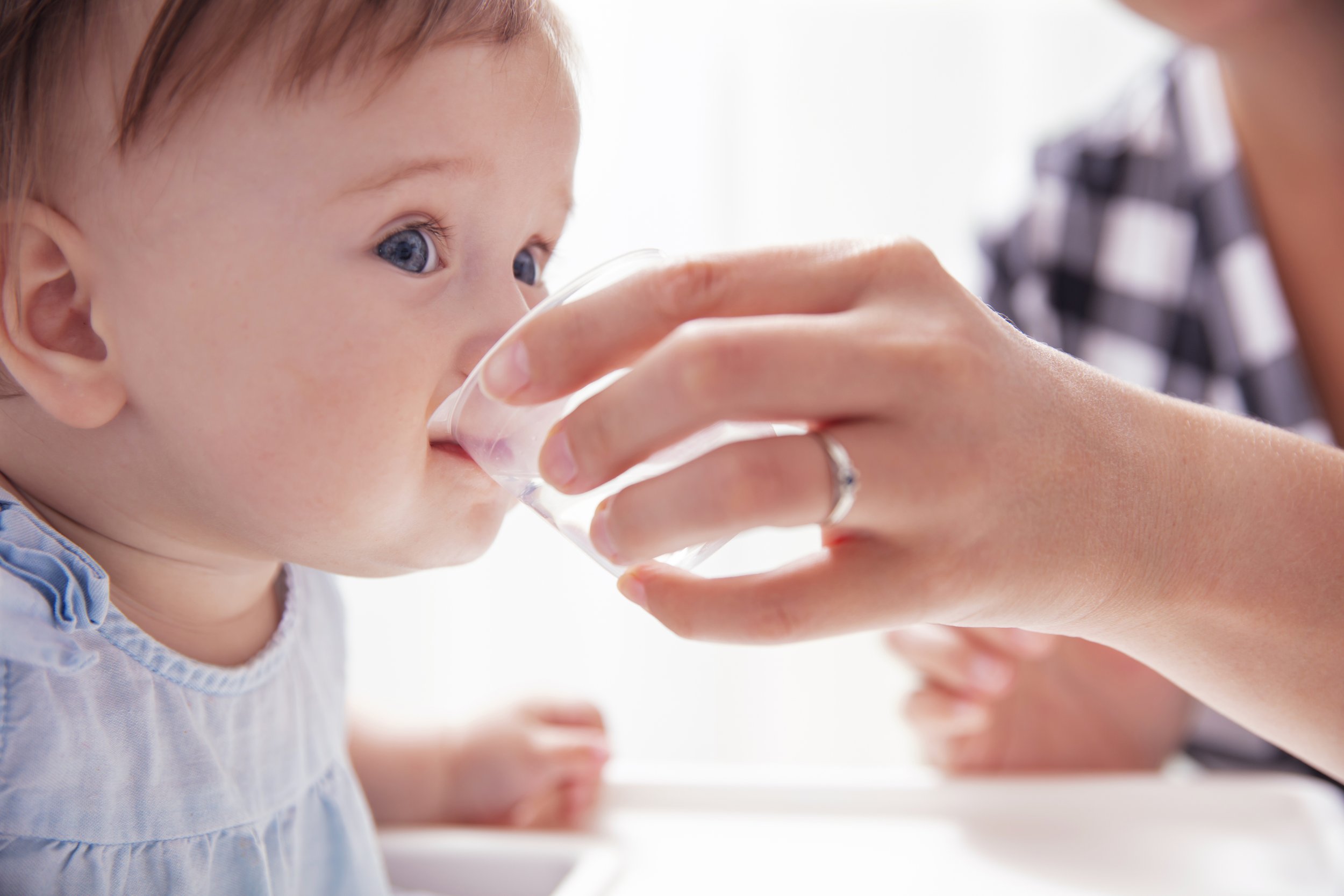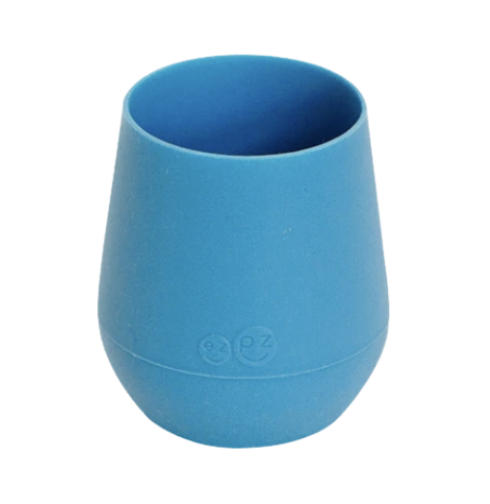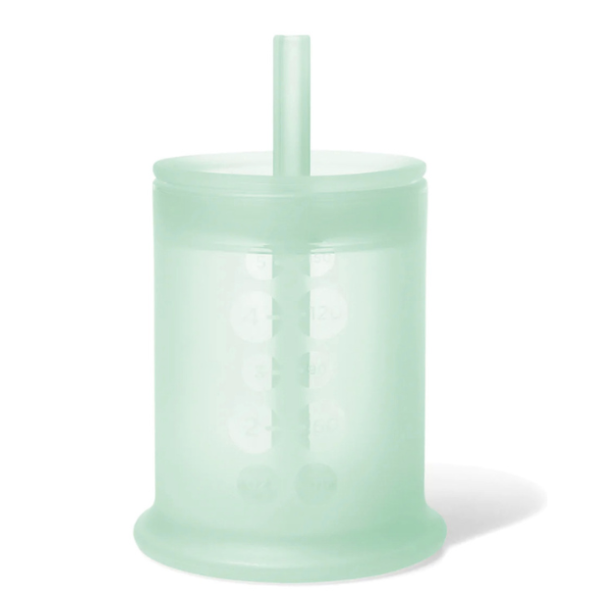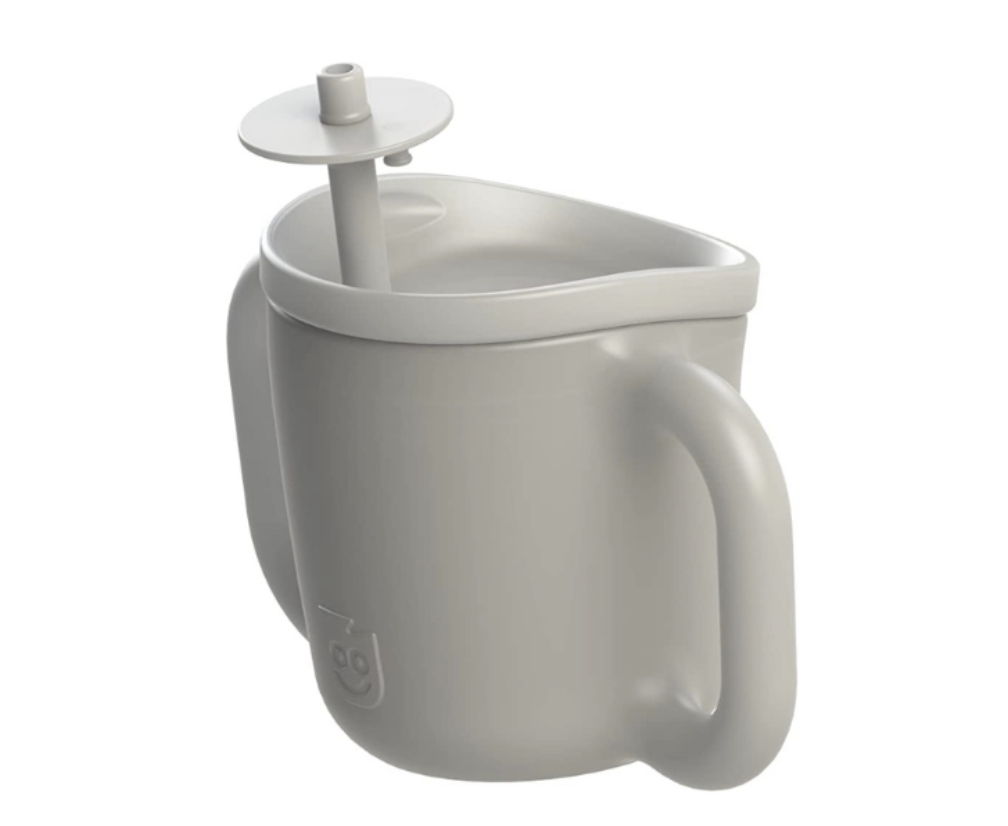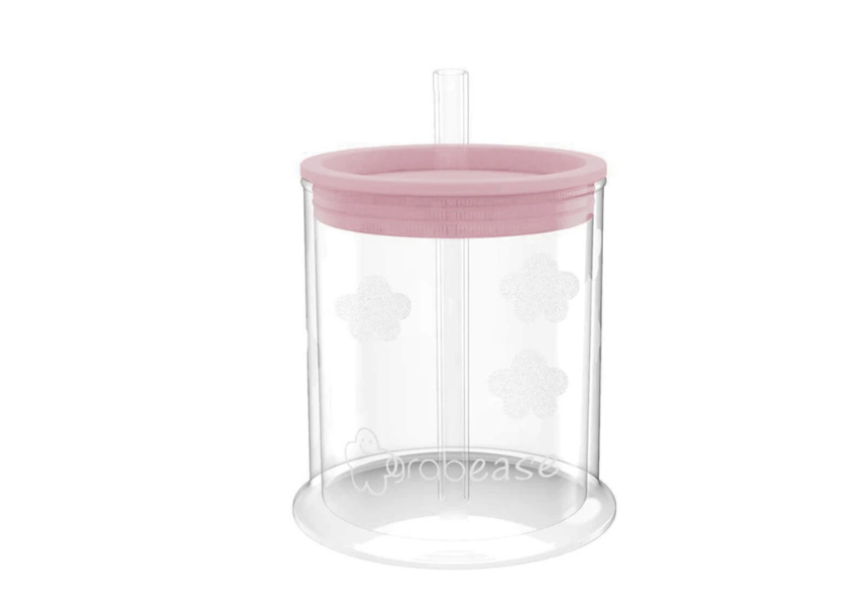How to Introduce an Open Cup or Straw to Baby
Written by Catherine Callahan, MS, CCC-SLP, CLC, Speech-language Pathologist, Pediatric Feeding Therapist, and Certified Lactation Counselor
March 2023
When you think of baby-led weaning, you probably picture solid foods. While baby-led weaning is the gentle transition of moving a child to a more solid food diet (rather than solely breastmilk or formula), it’s actually not all about solids.
In fact, the best time to introduce cup drinking is when your baby starts eating solid foods around 6 months of age, as cups and straws are ideal for oral motor skill development. Just like eating, your child will master this skill in time with frequent exposure and practice.
When practicing with cups and straws, offer small amounts of breastmilk, formula, or water. As a reminder, breastmilk and formula should be the main sources of nutrition during the first 12 months of life, with complementary solids from 6 to 12 months. Also, babies should consume no more than 4 to 8 ounces of water per day from 6 to 12 months.
If your baby is drinking breastmilk or formula from a bottle, we recommend weaning bottle use completely by about 12 to 18 months. Introducing cups and straws at 6 months allows your baby plenty of time to build skills and independence, so the weaning process will be easier.
If you’re feeling overwhelmed, don’t worry. 101 Before One has your back! We’ve done the research so you don’t have to and laid it out for you step-by-step. Read on to learn exactly how to introduce open and straw cups to your baby and then get our list of top product recommendations to get you started.
Open Cups
Open cups can be introduced starting at 6 months with just 6 easy steps:
Position your baby in a supportive high chair.
Use a small, 1 to 5 oz size cup. Fill to the top with water.
Tilt the cup so the liquid is at the lip, and bring it to your baby’s mouth.
Support your baby by placing your fingers under their chin.
Hold it at an angle on your baby’s lip, allowing the baby to suckle the liquid from the cup.
Pull away after each 1-2 sips.
The more your baby practices, the better he or she will get at open-cup drinking.
Start by giving your baby a dry cup during playtime to build his or her comfort and confidence.
Then, give your baby time to practice independent drinking, starting with a small amount in the cup. Hold the cup in front of your baby and wait for them to reach for it with both hands. Be sure to help your baby tip the cup to their mouth as needed and have your baby wear a trough bib to catch any spills. This can get messy, so you can also practice outside when it’s warm, or even in the bathtub.
Recommended Open Cups:
EZPZ CUP
Made of soft silicone, The Ezpz cup is a great first cup because it is small in size, easy for tiny hands to hold, and dishwasher safe. It also has a sturdy base to prevent tipping over.
Tiny Cup - 2oz cup | Designed for 4 months and up, available in assorted colors
Mini Cup - 4oz cup | Designed for 12 months and up, available in assorted colors
Use code: Chikidsfeeding10 for 10% off
(Affiliate link)
GRABEASE CONVERTIBLE CUP SET
The Grabease Convertible Cup set comes with a 4 oz clear cup, a 1.5 oz mini cup, a lid, and a straw. The mini cup is a great starter cup because of its tiny size. Use it to give your baby small sips with your support, and then transition them to the clear cup as they develop independence. The clear cup allows you to see how quickly the liquid is moving, and the skinny straw is perfect for teaching straw drinking.
Shop Grabease Convertible Cup Set
Use code: Chikidsfeeding15 for 15% off
(Affiliate link)
TALK TOOLS ITSY CUP
The Itsy Cup is a 5 oz, soft silicone cup with handles to support independent drinking and your baby’s bilateral coordination. Its cut out shape is designed to reduce neck extension and keep baby safe while drinking. It also comes with a straw system for SQUEEZE METHOD drinking (keep reading to learn about this).
(non-affiliate link)
Straw Drinking
Straw cups can also be introduced between 6 to 12 months. Here are two methods for teaching straw drinking:
The Pipette Method
Dip your straw into a cup of liquid. As the liquid fills the straw, place your finger on the other end, holding the liquid in the straw.
Bring the straw to your baby’s mouth and wait for them to round their lips around the straw. Then release your finger, letting the liquid flow into their mouth.
Repeat over several trials, pausing over time to release the liquid, waiting for your baby to initiate sucking.
After your baby begins sucking, transition to a short straw in a cup. Shorter straws will be easier for babies to suck independently.
The Squeeze Method
Use a flexible cup with a closed system (a top without a hole, or a hole that you can cover). When you squeeze this type of cup, the liquid should rise up the straw, similar to when a juice box is squeezed and the liquid goes up the straw.
Bring the cup to your baby’s mouth, wait for them to round their lips around the straw, and then gently squeeze to push a small amount of liquid into their mouth.
Practice this several times, pausing a little longer before squeezing each time.
When you see your baby sucking the liquid, stop squeezing so he or she can suck independently.
Recommended Straw Cups
OLABABY TRAINING CUP
The Olababy Training Cup is a 5 oz, clear silicone cup that can be used with both the PIPETTE METHOD and SQUEEZE METHOD. With the lid in place, cover the hole with your finger and squeeze the cup to make the liquid rise up the straw.
Use code: chikidsfeeding10 for 10% off
(affiliate link)
RICHELL CUP
This is a simple cup from Amazon that is designed to help babies learn to drink from a straw. Similar to the SQUEEZE METHOD, you simply push a button on the top of the cup and the liquid rises up the straw. It’s small in size with dual handles and a clear base making it cup a great choice for teaching your baby to drink.
Shop Richell Cup
(affiliate link)
LALO TRAINING CUP
This is a soft, silicone straw cup with dual handles and a removable lid, allowing for both open cup and straw practice. It can be used with both the PIPETTE and SQUEEZE METHODS. With the lid in place, cover the hole with your finger, squeeze the cup, and the liquid will rise up the straw.
Shop Lalo
(affiliate link)
TALK TOOLS ITSY CUP
The Itsy Cup is a great option for open-cup and straw drinking. Its short straw, dual handles, and cut out top are perfect for a learning baby. The straw has a removable valve that allows you to easily use the SQUEEZE METHOD. Once your baby is independent in drinking, you can slide the valve up the straw and use it as a lip block if your baby tends to use their tongue around the straw instead of lips. Its ruffled straw provides sensory input to the lips, and the short straw makes the learning process easier.
(non-affiliate link)
EZPZ CUP & STRAW
The Ezpz Cup & Straw is a wonderful option because it easily converts from an open cup to a straw cup. This is a great cup to use with the PIPETTE METHOD. Once your baby begins sucking from the straw pipette, put the short straw into the cup and allow the baby to drink independently. Its straw is curved and has sensory bumps to encourage lip rounding on one end, and is straight on the other end. Transition to the straight end as your baby becomes independent.
Use code: chikidsfeeding10 for 10% off
GRABEASE CONVERTIBLE CUP SET
The Grabease Convertible Cup also easily converts from an open cup to a straw cup. Its straw is short and skinny, allowing for easier drinking. This is a solid option for your baby’s first straw cup because the skinny straw gives small sips, which make it easier for your baby to control.
Shop Grabease Convertible Cup Set
Use code: Chikidsfeeding15 for 15% off
(Affiliate link)
What about sippy cups?
You might be surprised to learn that you can skip the sippy cup. Sippy cups have a spout that lays on top of the baby’s tongue, similar to a bottle nipple. This encourages the baby to use a bottle-drinking pattern.
Rather than continuing to use this immature pattern, straw and open-cup drinking allows the baby to touch the cup at the lips and elevate the tongue behind them. This is a mature drinking pattern and one that your baby should use by 12 months.
Spouted sippy cups and 360 cups can be convenient to use but are not beneficial for oral development. We recommend moving straight from bottle drinking to straw and open-cup drinking so your baby moves forward toward successful eating.
What to keep in mind
When it comes to cup drinking, some babies figure it out in a week and others take a month or more. If your baby isn’t getting it right away, don’t worry. If you consistently practice, your baby will eventually get it.
If your baby is struggling to progress with straw or open-cup drinking, consult your child’s pediatrician to see if a referral to a speech pathologist and feeding therapist is needed.
What to learn more about starting solids?
If you found this post helpful, we share more evidence-based best practices for starting solids inside our 101 before one program.
At 101 before one, we believe babies who eat Family Meals from the Start™ will be happy, healthy eaters for life. Starting solids can be intimidating, but we show you how to introduce 101 different foods to your baby before their first birthday, all through simple, easy-to-follow recipes that the whole family can enjoy.


